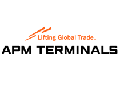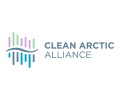Tanker Market Improved During February
 The tanker market fared better during the month of February. According to the latest monthly report from OPEC, issued this week, dirty tanker rates picked up in February, as a more than 20% increase in both Suezmax and Aframax spot freight rates outpaced a 6% decline in VLCCs. Weather was a key factor in boosting rates with weather delays in the Turkish strait and around the Mediterranean lifting rates West of Suez amid a pickup in chartering activity. Unusual freezing weather in the US which struck in the middle of February led to disruptions in US crude and product trade flows, provided further support for Aframax as well as Suezmax rates amid limited availability in the Atlantic basin. Higher bunker fuel prices also provided some momentum for higher rates.
The tanker market fared better during the month of February. According to the latest monthly report from OPEC, issued this week, dirty tanker rates picked up in February, as a more than 20% increase in both Suezmax and Aframax spot freight rates outpaced a 6% decline in VLCCs. Weather was a key factor in boosting rates with weather delays in the Turkish strait and around the Mediterranean lifting rates West of Suez amid a pickup in chartering activity. Unusual freezing weather in the US which struck in the middle of February led to disruptions in US crude and product trade flows, provided further support for Aframax as well as Suezmax rates amid limited availability in the Atlantic basin. Higher bunker fuel prices also provided some momentum for higher rates.
Spot fixtures
Global spot fixtures edged lower m-o-m in February, declining by 0.5 mb/d, or 3%, to average 14.7 mb/d. Spot fixtures were around 4 mb/d, or 21%, lower than the same month last year.
OPEC spot fixtures declined m-o-m in February, down by 0.9 mb/d, or more than 9%, to average 9.3 mb/d. Compared with the same month last year, OPEC spot fixtures were almost 26% lower, down by 3.2 mb/d. Fixtures from the Middle East-to-East averaged 5.1 mb/d in February, representing a decline of around 1.0 mb/d, or 17%, m-o-m. Y-o-y, this represents a decline of 2.3 mb/d, or almost 32%. After showing gains the month before, Middle East-to-West fixtures fell back, declining 13%, or more than 0.1 mb/d m-o-m, to average 0.8 mb/d. This was 0.4 mb/d or 35% lower compared with the same month last year. The one bright spot was Outside Middle East, where fixtures rose by almost 0.3 mb/d, or 8% m-o-m, to average 3.5 mb/d. Y-o-y, fixtures were 12% or almost 0.5 mb/d, lower.
Sailings and arrivals
Sailings improved m-o-m in February, with OPEC sailings averaging 21.8 mb/d. This represented a gain of 0.4 mb/d, or 2%, m-o-m. Y-o-y, OPEC sailings were 2.3 mb/d, or close to 10%, lower. Middle East sailings rose by almost 0.3 mb/d, or over 1% m-o-m, to average 16.3 mb/d. Y-o-y, sailings from the region were down 2.0 mb/d, or 11%, compared with the same month last year. Crude arrivals in February rose m-o-m on most routes, building on gains seen the previous month. Far East arrivals continued to lead gains, increasing by almost 0.6 mb/d, or close to 5%, to average 12.5 mb/d. Arrivals on the route were also 4 mb/d, or 47%, higher compared with February 2020. Arrivals in Europe rose 0.2 mb/d, or almost 2%, to average just under 11 mb/d, but still registered a decline of 0.7 mb/d, or 6%, y-o-y. Meanwhile, North American arrivals averaged 8.1 mb/d, representing an increase of close to 0.2 mb/d, or 2%, m-o-m and a marginal gain of less than 1% y-o-y. Arrivals in West Asia recovered some of the previous month’s losses, with a gain of 0.2 mb/d, or over 3%, to average 5.5 mb/d.
Dirty tanker freight rates
Very large crude carriers (VLCCs)
VLCC spot rates in February relinquished the gains seen the month before, falling by 6% m-o-m to stand some 27% lower compared with the same month last year. Limited tanker demand amid still ample tonnage availability continued to be a key factor weighing on spot freight rates, although rates managed to stay above the exceptionally low levels seen in October and November 2020, with rising bunker fuel prices providing some support. Rates on the Middle East-to-East route led losses m-o-m, falling 10% to average WS32 points. Y-o-y, rates were 27% lower compared with the same month last year. Rates on the Middle East-to-West route also declined m-o-m, dropping 7% to average WS22 points in February. Y-o-y, rates were 28% lower. The West Africa-to-East route edged down 2% m-o-m in February to average WS35 points. Rates were 26% lower compared with February 2020.
Suezmax
In contrast to their larger brethren, average rates in the Suezmax class saw gains in February, rising for the third month in a row. Compared with the previous month, average Suezmax rates were 23% higher, as relatively strong Aframax rates made Suezmaxes competitive on some routes. Y-o-y, rates were 35% lower. On the West Africa-to-US Gulf Coast (USGC) route, Suezmax rates averaged WS51 points in February, representing a 17% gain from the month before. Y-o-y, rates were still 34% lower than in February 2020. Spot freight rates on the USGC-to-Europe route jumped 29% m-o-m to average WS53 points but remained 36% lower compared with the same month last year.
Aframax
Aframax rates on average rose for the fourth month in a row in February. Gains were seen across all routes, with average rates rising 27% m-o-m. However, rates were still 16% lower compared with the previous year.
The largest gains were seen on Med routes, where robust chartering activity and reduced tonnage availability due to weather disruptions in the Turkish straits and around the Mediterranean supported the market. The Mediterranean-to-Northwest Europe (NWE) route jumped 52% m-o-m to average WS96, representing a 33% increase y-o-y. The Cross-Med route rose 36% m-o-m to average WS98, representing a 22% increase y-o-y. Meanwhile, the Caribbean-to-US East Coast (USEC) route increased 14% m-o-m in February to average WS98. Rates were boosted by disruptions caused by the closure of US Gulf ports due to freezing weather and limited availability in the Atlantic basin. Y-o-y, rates on the route were still 42% lower. Within the Asian region, the Indonesia-to-East route rose 10% to average WS64, which was some 36% lower y-o-y.
Clean tanker freight rates
Clean spot freight rates registered further gains in February, increasing by 14% m-o-m, as improvements West of Suez continued to outweigh declines East of Suez.
West of Suez experienced a 27% increase m-o-m in February, supported by developments on all routes as weather disruptions impacted Med rates throughout the month and rates in the Atlantic basin around the middle of the month with the onset of frigid temperatures in the US Gulf Coast. Y-o-y, rates were still 13% lower than in the same month last year. Gains were seen on the Cross-Med and Med-to-NWE routes, which rose 35% and 25%, respectively, to average WS163 and WS173 points. Meanwhile, rates on the NWE-to-USEC route also enjoyed an increase, up 20% m-o-m, to average WS133 points. Clean spot rates were still 16% lower compared with the same month last year. East of Suez rates declined by 8% in February and showed a 16% loss y-o-y. The Middle East-to-East route was flat in in February, averaging WS81. This represented a 19% decline compared with the same month last year. On the Singapore-to-East route, clean freight rates erased the previous month’s gains and then some, dropping by 14% in February. With an average of WS121, rates were 8% lower compared with February 2020.
Nikos Roussanoglou, Hellenic Shipping News Worldwide

 Hellenic Shipping News Worldwide Hellenic Shipping News Worldwide, Online Daily Newspaper on Hellenic and International Shipping
Hellenic Shipping News Worldwide Hellenic Shipping News Worldwide, Online Daily Newspaper on Hellenic and International Shipping
























 PG-Software
PG-Software